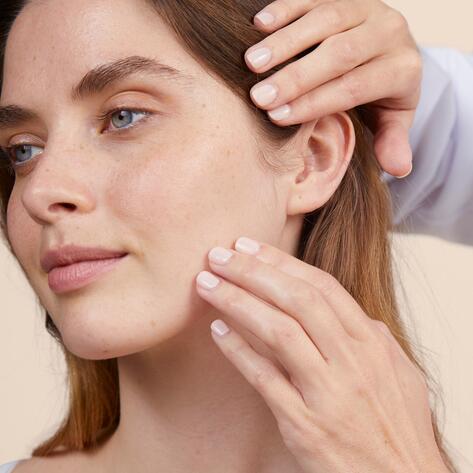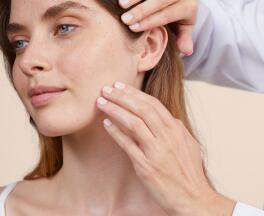Sun capital
What does the term “sun capital” mean?
The term "sun capital" refers to the amount of UV light that the skin can tolerate before it becomes damaged. This capacity is genetically determined at birth and varies according to phototype. Our sun capital is limited: at 20 years old, we have already used up 50% of our capacity. The term "sun capital" also indirectly refers to the arsenal of defences that the skin has at its disposal to fight against the harmful effects of the sun, such as sunburn and skin ageing. This is acquired at birth, it cannot be renewed, and it depends on the phototype of each individual. Each skin type has its own characteristics and different reactions to the sun.
What affects your sun capital?
Everyone's sun capital depends on many factors.
Your phototype
Very sensitive to the sun, light phototypes (phototype I and II) have a very low sun capital. In contrast to darker skin tones (phototypes IV or V), their tanning intensity and melanocyte capacity during their lifetime is restricted. The more melanin an individual naturally has, the greater the sun capital and the better armed the individual is against the sun.
Your history plays a role
People who have experienced multiple sunburns during childhood see their sun capital diminish over the years, since the effects of the sun on the skin are cumulative and the skin remembers these aggressors. And beware of the butterfly effect: a sunburn in childhood can become skin cancer in adulthood.
Your protection and exposure habits
Very sensitive to the sun, light phototypes (phototype I and II) have a very low sun capital. In contrast to darker skin tones (phototypes IV or V), their tanning intensity and melanocyte capacity during their lifetime is restricted. The more melanin an individual naturally has, the greater the sun capital and the better armed the individual is against the sun.
The environment
Stress, smoking, pollution and a diet low in antioxidants encourage the proliferation of free radicals. These are free electrons that travel through the body and are responsible for skin ageing, contributing to skin dryness and making it less able to tan.
Melanomas are directly linked to the way you look after your sun capital
Although there are a variety of factors (chemical, physical, medicinal, nutritional, viral), intense and repeated exposure of certain parts of the body to the sun appears to play an active role in the appearance of melanomas. This is why it is important to protect yourself from the sun by respecting the rules of sun exposure and choosing good sun protection. This is especially true for people in phototype groups I and II who are particularly sensitive to melanomas: prevention alone is not enough to delay the appearance of this skin cancer, which is among the most serious. Exposure to ultraviolet radiation has cumulative effects, meaning that they add up or accumulate over time. Skin damage starts at an early age and, although not visible, increases throughout our lives. It is generally accepted that it takes 10 to 15 years of excessive sun exposure to cause cancer. So take care of your sun capital!

The incidence of melanoma is directly proportional to the number of sunburns accumulated during childhood, which is the time in your life when the skin is most vulnerable to radiation.
WE ANSWER YOUR QUESTIONS
Sun resistance refers to your skins ability to protect itself against sun damage. When our ability to resist sun damage decreases, it’s a bit like gaining points on a licence. If you want to keep enjoying the sun safely, you have to be vigilant. In fact, we need to be careful when it comes to excessive sun exposure from the earliest stages of life. But it's never too late to get it right. Preventing sun-related risks requires photoprotection, or constant caution when it comes to sun exposure, especially by strictly observing a few common sense rules when it comes to the sun: do not stay in the sun too long during peak hours of sunlight, wear clothing, hats and sunglasses with UVA protection, and use high SPF protection.
Unfortunately, there is no miracle method for increasing your ability to resist sun damage and your skin's ability to tan. Your ability to resist sun damage depends on your skin type, exposure habits and the exposure to UV rays already accumulated by your skin. That being said, to enjoy the sun for longer, you can take up good habits from a young age: combine clothing and sun protection, avoid exposure at the hottest times of day, soothe the skin after sun exposure and prep skin before going out in the sun, especially by exfoliating to enhance your tan.
Sunburn is already a strong signal from your skin that you haven’t protected it. The first signs of skin ageing, wrinkles and fine lines, lack of radiance and loss of elasticity are all signals that your skin can no longer tolerate UV exposure and that your ability to resist sun damage has been used up. This is because these signs are linked to the slowing down of skin cell metabolism and repeated attacks of free radicals due to exposure to UV rays. The appearance of melanoma or any other form of skin cancer is an even stronger signal that you should not expose your skin to the sun at all, and that it is imperative to monitor and protect your moles.
OUR SOLUTIONS TO PROTECT OUR FUTURE
Eau Thermale Avène skin care products designed to protect the skin and respect the oceans
NEWSLETTER
We're always here for your skin!
All our advice on how to take care of your skin day to day.

Which skin care routine should you adopt?
Identify what it really needs with the help of our experts and discover the most suitable skin care routine for you.

